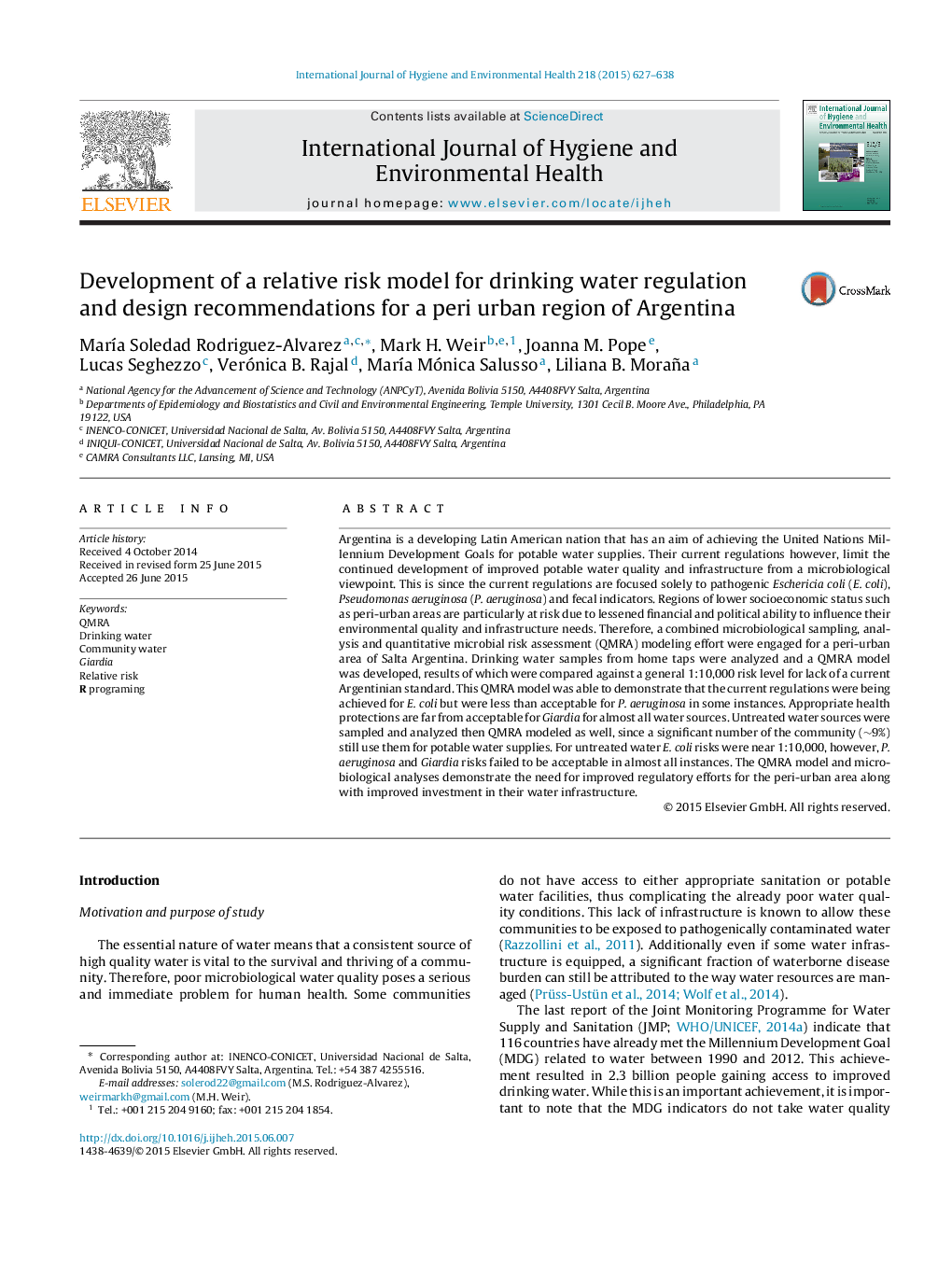| کد مقاله | کد نشریه | سال انتشار | مقاله انگلیسی | نسخه تمام متن |
|---|---|---|---|---|
| 2588426 | 1561887 | 2015 | 12 صفحه PDF | دانلود رایگان |
• Argentine drinking water regulations need to account for pathogenic protozoa.
• Indicator dominated drinking water regulations limit drinking water protection.
• Design for peri-urban regions require combined WSP, QMRA and engineering analysis.
Argentina is a developing Latin American nation that has an aim of achieving the United Nations Millennium Development Goals for potable water supplies. Their current regulations however, limit the continued development of improved potable water quality and infrastructure from a microbiological viewpoint. This is since the current regulations are focused solely to pathogenic Eschericia coli (E. coli), Pseudomonas aeruginosa (P. aeruginosa) and fecal indicators. Regions of lower socioeconomic status such as peri-urban areas are particularly at risk due to lessened financial and political ability to influence their environmental quality and infrastructure needs. Therefore, a combined microbiological sampling, analysis and quantitative microbial risk assessment (QMRA) modeling effort were engaged for a peri-urban area of Salta Argentina. Drinking water samples from home taps were analyzed and a QMRA model was developed, results of which were compared against a general 1:10,000 risk level for lack of a current Argentinian standard. This QMRA model was able to demonstrate that the current regulations were being achieved for E. coli but were less than acceptable for P. aeruginosa in some instances. Appropriate health protections are far from acceptable for Giardia for almost all water sources. Untreated water sources were sampled and analyzed then QMRA modeled as well, since a significant number of the community (∼9%) still use them for potable water supplies. For untreated water E. coli risks were near 1:10,000, however, P. aeruginosa and Giardia risks failed to be acceptable in almost all instances. The QMRA model and microbiological analyses demonstrate the need for improved regulatory efforts for the peri-urban area along with improved investment in their water infrastructure.
Journal: International Journal of Hygiene and Environmental Health - Volume 218, Issue 7, October 2015, Pages 627–638
